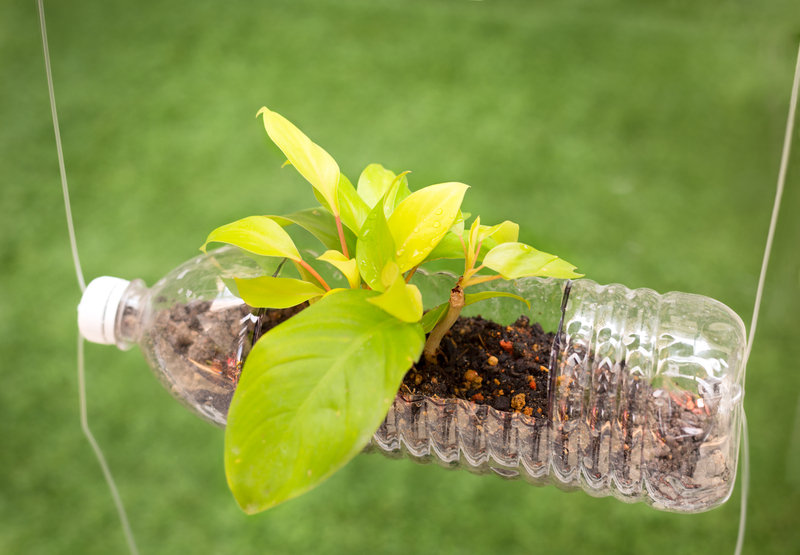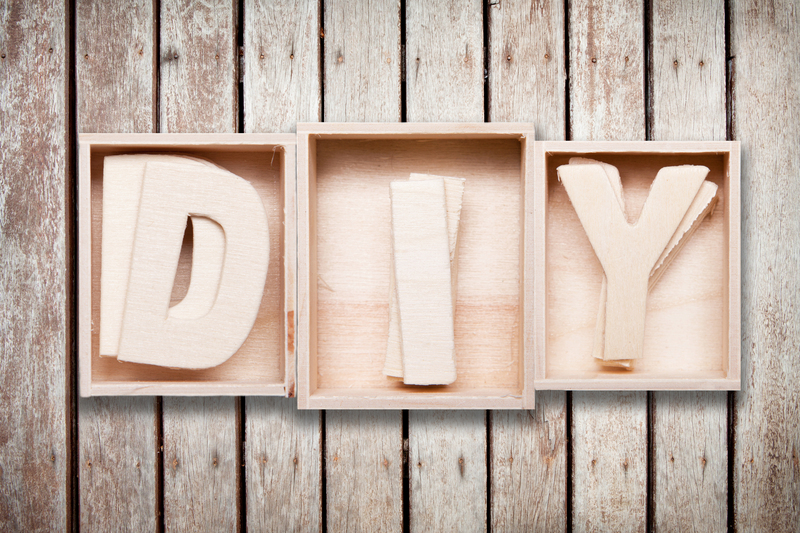Top Tips for Disposing of Pots and Pans Sustainably
Looking for eco-friendly ways to get rid of your old pots and pans? If you're upgrading your cookware or decluttering your kitchen, tossing your used pots and pans in the trash isn't the most sustainable option. Understanding how to dispose of pots and pans sustainably can make a big difference for the environment. This comprehensive guide shares the best practices and top tips for giving your cookware a new life or ensuring it's disposed of responsibly.
Why Sustainable Disposal of Pots and Pans Matters
Pots and pans are made from a mix of materials, including aluminum, stainless steel, copper, cast iron, and often non-stick coatings or plastics. When they're simply thrown in the garbage, these materials can end up in landfills, where they don't break down easily and can harm the environment.
Furthermore, many old cookware items contain valuable recyclable metals or can be repurposed with a bit of creativity. By following sustainable disposal methods, you help reduce waste, conserve resources, and even support your community.

How to Know When to Dispose of Pots and Pans
- Warping or severe scratching: A warped base or severe scratches affect heat distribution and safety.
- Damaged non-stick coating: Peeling or flaking can release toxins into food and is unsafe.
- Cracks or chips: Can lead to further breakage and danger during use.
- Stubborn stains and rust: When cleaning no longer helps, it might be time to retire your cookware.
When your cookware reaches the end of its usable life, consider the options below before tossing it in the trash.
Best Sustainable Ways to Dispose of Pots and Pans
Disposing of old pots and pans sustainably is about minimizing waste and maximizing reuse and recycling opportunities. Here's how you can do it:
1. Donate If They're Still Usable
If your pots and pans are still in decent condition, consider donating them. Many people may find them useful, especially if they're moving into a first home or need affordable kitchen basics.
- Charity shops and thrift stores: Organizations such as Goodwill and The Salvation Army often accept cookware in good condition.
- Homeless shelters and community kitchens: These groups often welcome donations of functional kitchenware.
- Online giving platforms: Use social networks, Freecycle, or Buy Nothing groups to offer your old cookware directly to someone in need.
2. Upcycle or Repurpose Old Cookware
Creative upcycling is both fun and ecological. Here are some ideas:
- Plant pots: Turn large pots or saucepans into rustic planters for your garden or balcony.
- Storage bins: Use old pans to organize tools, art supplies, or craft materials.
- Decorative items: Cast iron pans or copper pots can be polished up and hung decoratively in your kitchen or garden.
- Bird feeders or baths: Repurpose shallow pans for birds in your backyard.
Upcycling gives a new purpose to damaged cookware and diverts materials from landfill.
3. Recycle Scrap Metal Properly
Most pots and pans are made of metals like aluminum, stainless steel, and copper that are highly recyclable. Here's how to recycle them the right way:
- Check municipal recycling programs: Not all curbside recycling accepts cookware. Look up your local council's rules.
- Metal recycling centers: Most scrap metal yards accept pots and pans, even with broken handles or worn non-stick surfaces.
- Remove non-metal parts: Detach plastic handles or glass lids to ensure clean recycling streams.
- Group similar metals: If possible, separate different types of metal cookware to make processing easier.
Proper metal recycling conserves natural resources and reduces greenhouse gas emissions associated with new metal production.
4. Participate in Manufacturer Take-Back Programs
Some cookware brands offer take-back or recycling programs for their products. Examples include:
- TerraCycle partnerships: Certain cookware brands partner with TerraCycle to recycle old cookware, no matter the brand.
- In-store drop-off: Some kitchenware stores accept old pots and pans for recycling when you purchase new ones.
Research your cookware brand to see if they offer such services - you might be able to send your old pots and pans back directly!
5. Avoid the Landfill as Much as Possible
Tossing pots and pans in the regular trash should be a last resort. When you landfill cookware, decades can pass before materials break down, and valuable metals are lost. Always explore the above options first for a more environmentally friendly solution.
Special Considerations for Non-Stick Pots and Pans
Non-stick cookware, usually coated with Teflon (PTFE), requires extra care. Their surface makes recycling more challenging:
- Remove the non-stick coating if possible: Some metal recyclers ask you to strip the coating before recycling. Check local guidelines.
- Manufacturer recycling programs: Search for brands or recycling schemes that handle non-stick surfaces safely.
- Don't incinerate non-stick pans: Burning Teflon releases toxic fumes, which harm air quality.
When in doubt, contact your local recycling center for guidance or search online directories for responsible disposal options.
How to Prepare Pots and Pans for Disposal or Recycling
To streamline the sustainable disposal of your cookware, follow these preparation steps:
- Thoroughly clean your pots and pans to remove food residue.
- Remove all non-metal components: Take off plastic, wooden, or glass handles and lids where possible.
- Sort by material type: This helps recyclers process items more efficiently.
- Check for hazardous substances: High-tech pans with electronics (e.g., detachable temperature sensors) may require special handling.
Where to Dispose of Old Pots and Pans Sustainably
If you've decided how you want to dispose of your cookware, you'll need to find the right place to do it. Here are some common venues:
- Local metal recycling centers - Accept most metal cookware.
- Household waste and recycling centers - Check for special drop-off points for metal goods.
- Charity or secondhand stores - For items in reusable condition.
- Community swap events and online platforms - A great way to pass on usable pots and pans.
- Special recycling events - Municipalities often hold e-waste and metal recycling drives.
Eco-Friendly Alternatives to Throwing Away Pots and Pans
The sustainable disposal of cookware doesn't always mean getting rid of it immediately. Consider these eco-friendly alternatives:
Repair Instead of Replace
If damage is minor, like a loose handle or a slightly uneven base, repairing your cookware can save both money and resources. Search for local repair shops or handy online tutorials. Cast iron, especially, is highly durable and can be restored even after years of neglect.
Pass Down to Friends or Family
Someone you know may be starting out in a new apartment or in need of extra kitchenware. Offering gently used pots or pans directly avoids the need for new products and supports a sharing economy.
Host a Cookware Swap
Organize a swap among your community, friends, or neighbors. What you no longer need may be exactly what someone else is looking for.
Tips for Choosing Sustainable Cookware in the Future
After freeing up space in your kitchen, consider putting sustainability at the forefront of your next cookware purchase. Here's what to look for:
- Materials: Opt for stainless steel, cast iron, or copper, which are durable and easily recyclable.
- Longevity: Choose brands and pieces known for their durability and replaceable parts.
- Recyclable and repairable design: Avoid items with lots of plastic or complex assembly that make recycling difficult.
- Transparent manufacturing: Support companies with ethical and environmentally responsible production methods.
- Warranty programs: Invest in cookware that comes with repair, refurbishment, or buy-back guarantees.
By thinking ahead about the end-of-life for your new pans and pots, you make future disposal even more sustainable.

Some Frequently Asked Questions (FAQs) About Sustainable Cookware Disposal
Can non-stick pans be recycled?
Yes, but with caution. Non-stick coatings can complicate the recycling process, but many metal recyclers will take them if you remove any plastic handles and separate them from other waste. Some brands and specialty programs also accept non-stick cookware. Check your local guidelines.
What can I do with old lids?
Glass or metal lids can usually be recycled with other glass or metal waste. Alternatively, they make great craft project bases or can be repurposed in the garden.
Is it worth selling old pots and pans as scrap?
It can be! Scrap metal prices fluctuate, but large amounts of aluminum, copper, or stainless steel may net you a small return at a recycling center.
How can I safely dispose of cookware with damaged non-stick coatings?
Do not incinerate these items. Instead, find a recycling center that accepts non-stick cookware or return them via manufacturer take-back programs where offered.
Conclusion: Make Your Cookware Disposal Count
Our daily choices make a difference - especially when it comes to reducing kitchen waste. Disposing of pots and pans sustainably is surprisingly straightforward and can be even rewarding! By donating, upcycling, recycling, or participating in take-back schemes, you prolong the life of valuable materials and help protect our planet.
Next time you're ready to refresh your kitchen, remember these eco-friendly tips and share them with fellow home cooks. The shift toward sustainability starts in our own homes, one pot and pan at a time.
For more expert tips on sustainable living, kitchen organization, and eco-friendly choices, stay tuned to our latest articles.
